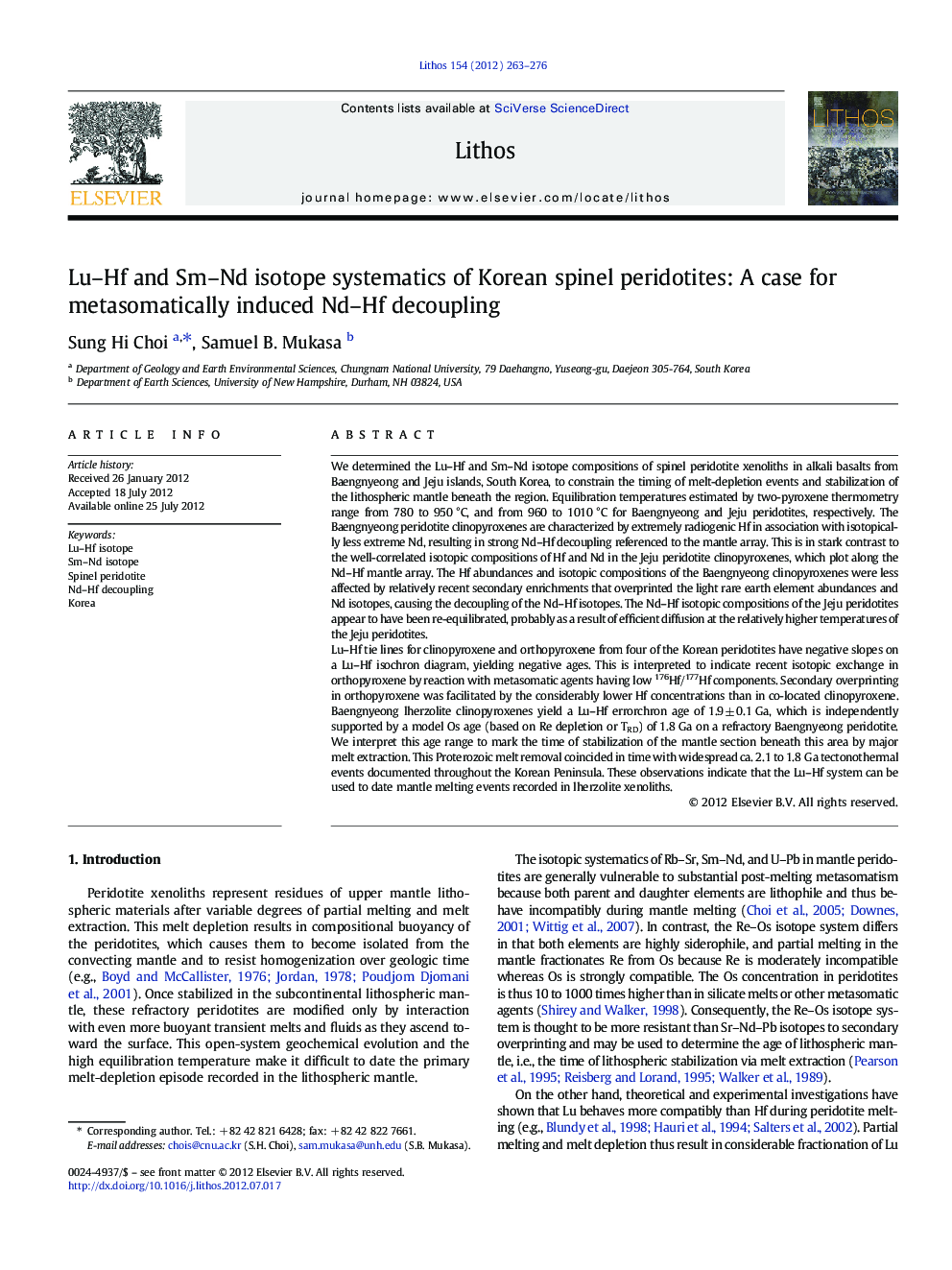| Article ID | Journal | Published Year | Pages | File Type |
|---|---|---|---|---|
| 4716410 | Lithos | 2012 | 14 Pages |
We determined the Lu–Hf and Sm–Nd isotope compositions of spinel peridotite xenoliths in alkali basalts from Baengnyeong and Jeju islands, South Korea, to constrain the timing of melt-depletion events and stabilization of the lithospheric mantle beneath the region. Equilibration temperatures estimated by two-pyroxene thermometry range from 780 to 950 °C, and from 960 to 1010 °C for Baengnyeong and Jeju peridotites, respectively. The Baengnyeong peridotite clinopyroxenes are characterized by extremely radiogenic Hf in association with isotopically less extreme Nd, resulting in strong Nd–Hf decoupling referenced to the mantle array. This is in stark contrast to the well-correlated isotopic compositions of Hf and Nd in the Jeju peridotite clinopyroxenes, which plot along the Nd–Hf mantle array. The Hf abundances and isotopic compositions of the Baengnyeong clinopyroxenes were less affected by relatively recent secondary enrichments that overprinted the light rare earth element abundances and Nd isotopes, causing the decoupling of the Nd–Hf isotopes. The Nd–Hf isotopic compositions of the Jeju peridotites appear to have been re-equilibrated, probably as a result of efficient diffusion at the relatively higher temperatures of the Jeju peridotites.Lu–Hf tie lines for clinopyroxene and orthopyroxene from four of the Korean peridotites have negative slopes on a Lu–Hf isochron diagram, yielding negative ages. This is interpreted to indicate recent isotopic exchange in orthopyroxene by reaction with metasomatic agents having low 176Hf/177Hf components. Secondary overprinting in orthopyroxene was facilitated by the considerably lower Hf concentrations than in co-located clinopyroxene. Baengnyeong lherzolite clinopyroxenes yield a Lu–Hf errorchron age of 1.9 ± 0.1 Ga, which is independently supported by a model Os age (based on Re depletion or TRD) of 1.8 Ga on a refractory Baengnyeong peridotite. We interpret this age range to mark the time of stabilization of the mantle section beneath this area by major melt extraction. This Proterozoic melt removal coincided in time with widespread ca. 2.1 to 1.8 Ga tectonothermal events documented throughout the Korean Peninsula. These observations indicate that the Lu–Hf system can be used to date mantle melting events recorded in lherzolite xenoliths.
► The Lu–Hf system can be used to date mantle melting events recorded in lherzolite. ► Blocking temperature for Lu–Hf diffusion in lherzolite is in the order of ca. 900 °C. ► Orthopyroxene contribution to Hf budget for bulk peridotite is not trivial. ► Individual opx grains are more prone to metasomatism than any co-located cpx grain.
